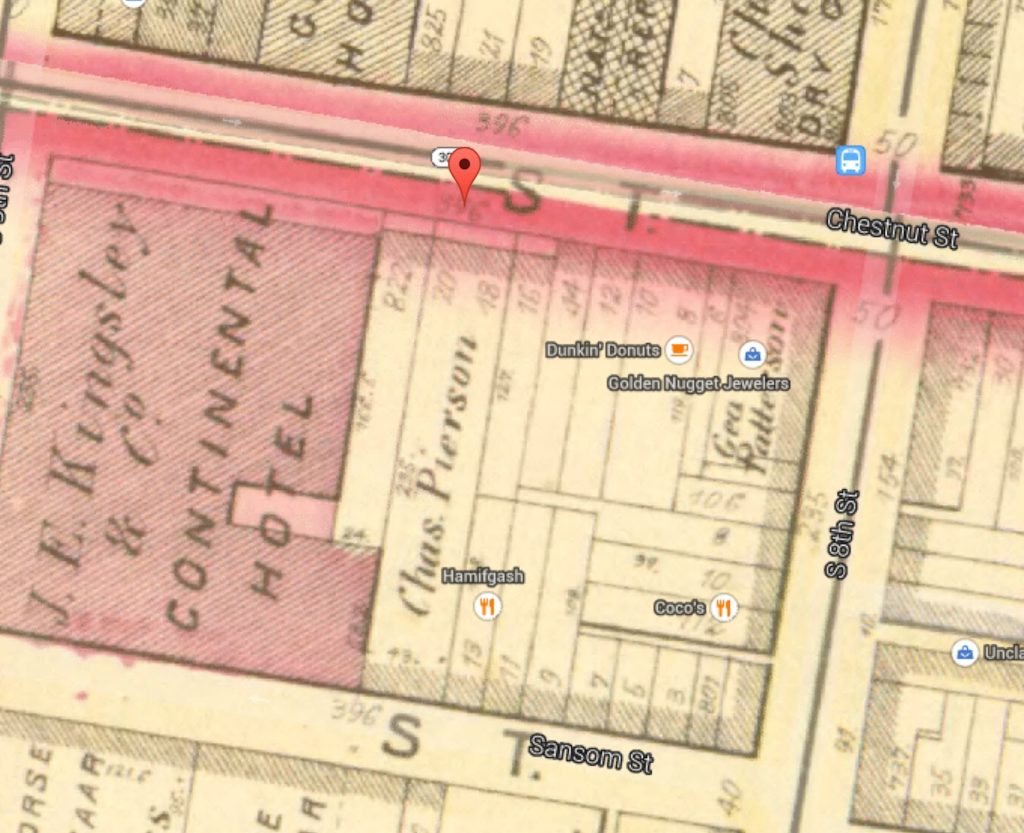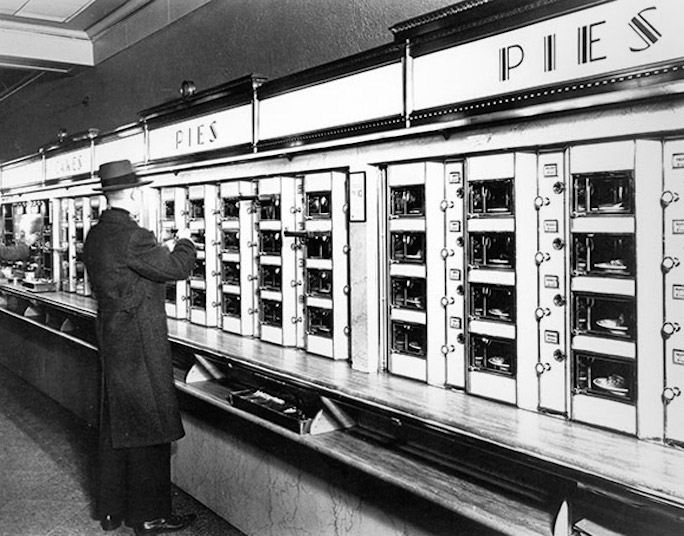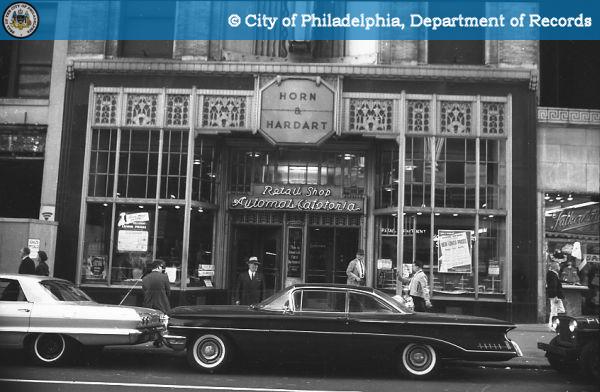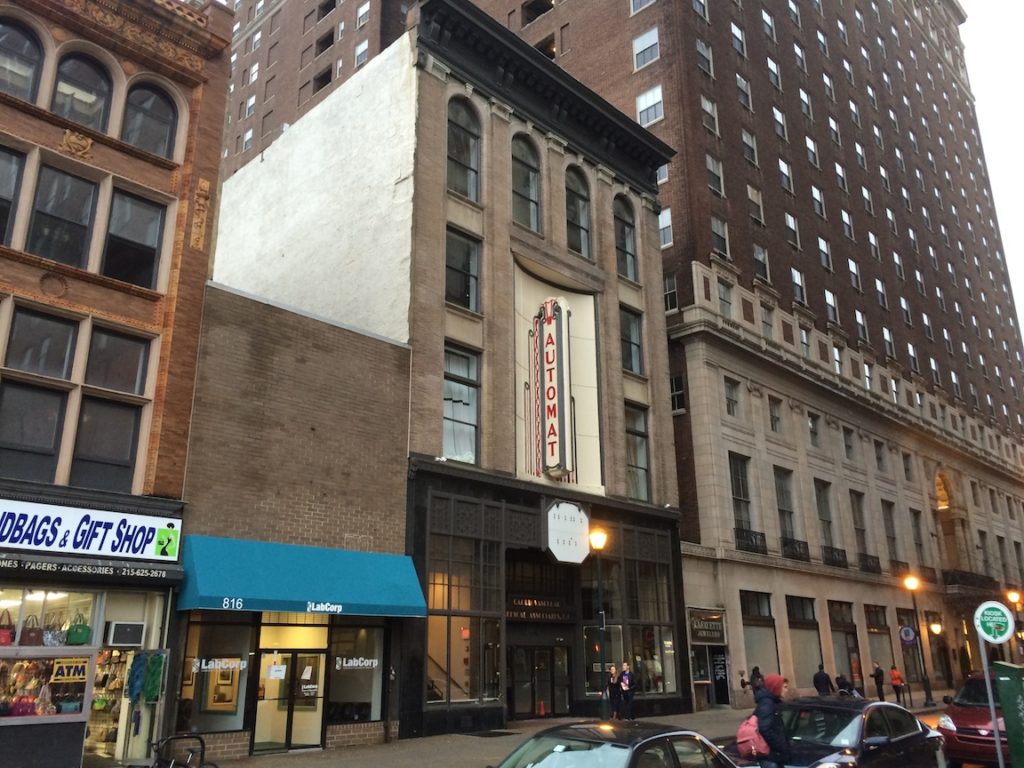The building at 818 Chestnut St. is a somewhat forgotten though surprisingly well-preserved Center City landmark. Evidence abounds in the building’s art deco facade to suggest that this was, indeed, a fashionable destination in the early 20th Century and one that redefined the dining experience for thousands of Philadelphians. But let’s rewind a bit first. According to Philadelphia Architects and Buildings, this spot was host to Thomas W. Evans & Co. Dry Goods in the mid-19th Century. Here below, Philadelphia Architects provides us with a sketch of the establishment in 1851.

By 1875, a newly constructed building now listed at 818 Chestnut St. was occupied by one Charles Pierson and stood in the shadow of the Continental Hotel. Pierson’s occupancy of the structure is evidenced both by its Pierson Building alias and the image here below taken from G.M. Hopkins’ 1875 Philadelphia Atlas.

According to Philadelphia Buildings and Architects, the building was also briefly occupied by the Philadelphia Electrical Exposition Company toward the turn of the century. However, it was the occupant that took over just a few years later that would truly make history. Partners Horn and Hardart transformed the first floor of the building into Philadelphia’s flagship Automat in 1902. According to the Philadelphia Encyclopedia, Horn and Hardart borrowed sophisticated German technology to design America’s first successful self-serve dining experience. Patrons could select from foods enclosed in glass cases and use nickels to make their purchases. The experience is captured in a 1902 photo taken from Wired.

The Automat proved a massive success, drawing large lunch crowds and setting a new standard for comestible convenience. Over the coming decades, Horn and Hardart cornered the market in nickel-dining, opening Automats throughout Philadelphia and New York. Though they weren’t the first to do it, they were the first to do it with any success. In Philly, the Chestnut location became a staple, especially for employees from the nearby Gimbel’s department store and Jeweler’s Row, according to the Philadelphia Encyclopedia. The exterior of the building is shown here below in a 1963 image taken from the Philadelphia Department of Records.

Horn and Hardart had achieved considerable success through the middle of the century but their fortunes shifted in the 1950s as Philly’s middle class fled to the suburbs. This, coupled with the gradual decline of the city’s department store sector and the proliferation of the McDonald’s fast food strategy, spelled doom for the Automat. In 1969, the original Philly Automat at 818 shuttered its nickel slots. According to the (unfortunately discontinued) blog Brian Goes to Town, the first floor of the building operated as a pharmacy for some years after the Automat closed. This is confirmed by lettering over the doorway advertising “Prescriptions” and “Beauty Aids.” Today, the upper floors of the building are occupied by various Jefferson University Hospital offices, though the Automat’s eye-catching signage still remains.

